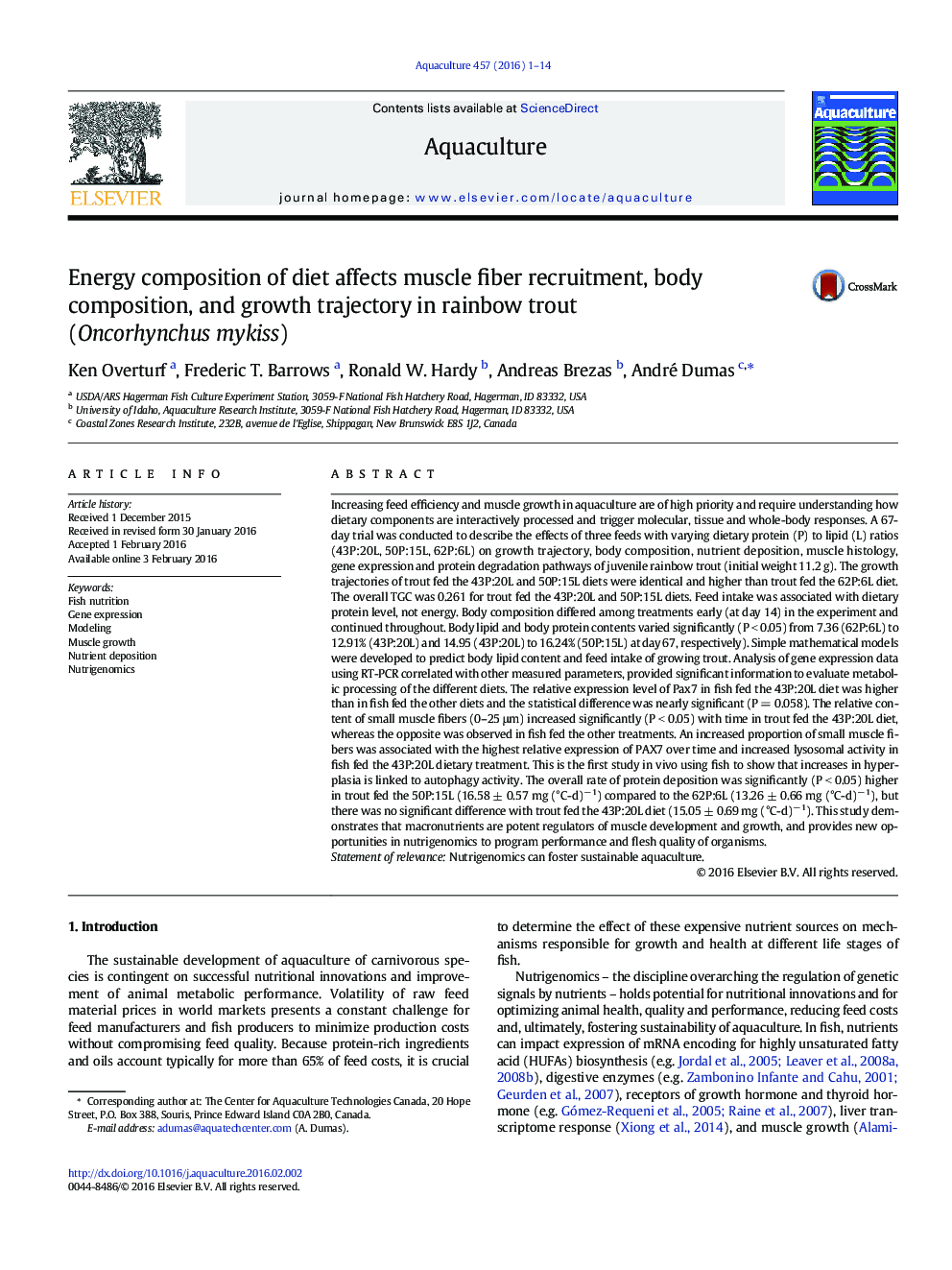| کد مقاله | کد نشریه | سال انتشار | مقاله انگلیسی | نسخه تمام متن |
|---|---|---|---|---|
| 2421445 | 1552830 | 2016 | 14 صفحه PDF | دانلود رایگان |

• Macronutrients are potent regulators of muscle development providing opportunities to program performance and flesh quality;
• Increase in hyperplasia is linked to autophagy activity: this is the first study in vivo using fish to show this;
• This is the first study in vivo using fish to show that increases in hyperplasia is linked to autophagy activity;
• Feed intake of trout is a function of dietary protein level to sustain their chief metabolic scope, i.e. protein deposition.
Increasing feed efficiency and muscle growth in aquaculture are of high priority and require understanding how dietary components are interactively processed and trigger molecular, tissue and whole-body responses. A 67-day trial was conducted to describe the effects of three feeds with varying dietary protein (P) to lipid (L) ratios (43P:20L, 50P:15L, 62P:6L) on growth trajectory, body composition, nutrient deposition, muscle histology, gene expression and protein degradation pathways of juvenile rainbow trout (initial weight 11.2 g). The growth trajectories of trout fed the 43P:20L and 50P:15L diets were identical and higher than trout fed the 62P:6L diet. The overall TGC was 0.261 for trout fed the 43P:20L and 50P:15L diets. Feed intake was associated with dietary protein level, not energy. Body composition differed among treatments early (at day 14) in the experiment and continued throughout. Body lipid and body protein contents varied significantly (P < 0.05) from 7.36 (62P:6L) to 12.91% (43P:20L) and 14.95 (43P:20L) to 16.24% (50P:15L) at day 67, respectively). Simple mathematical models were developed to predict body lipid content and feed intake of growing trout. Analysis of gene expression data using RT-PCR correlated with other measured parameters, provided significant information to evaluate metabolic processing of the different diets. The relative expression level of Pax7 in fish fed the 43P:20L diet was higher than in fish fed the other diets and the statistical difference was nearly significant (P = 0.058). The relative content of small muscle fibers (0–25 μm) increased significantly (P < 0.05) with time in trout fed the 43P:20L diet, whereas the opposite was observed in fish fed the other treatments. An increased proportion of small muscle fibers was associated with the highest relative expression of PAX7 over time and increased lysosomal activity in fish fed the 43P:20L dietary treatment. This is the first study in vivo using fish to show that increases in hyperplasia is linked to autophagy activity. The overall rate of protein deposition was significantly (P < 0.05) higher in trout fed the 50P:15L (16.58 ± 0.57 mg (°C-d)− 1) compared to the 62P:6L (13.26 ± 0.66 mg (°C-d)− 1), but there was no significant difference with trout fed the 43P:20L diet (15.05 ± 0.69 mg (°C-d)− 1). This study demonstrates that macronutrients are potent regulators of muscle development and growth, and provides new opportunities in nutrigenomics to program performance and flesh quality of organisms.Statement of relevanceNutrigenomics can foster sustainable aquaculture.
Journal: Aquaculture - Volume 457, 20 April 2016, Pages 1–14